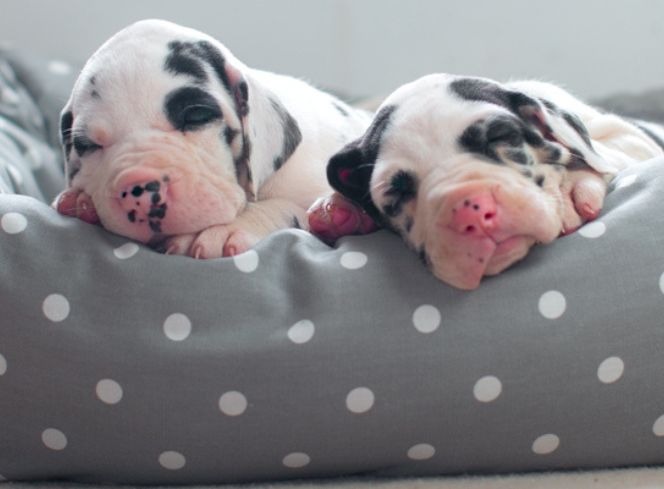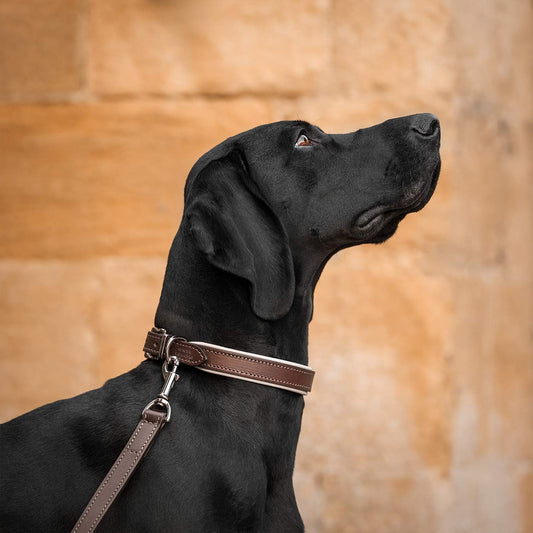Welcome to the Great Dane Ultimate Guide, where we delve into the fascinating world of this majestic and lovable giant breed. Whether you're a prospective owner, a current Great Dane enthusiast, or simply curious about these gentle giants, this comprehensive guide will provide you with valuable insights into every aspect of Great Dane ownership.
Wanting to shop for best food, toys and beds for your Great Dane? Why not look at our Great Dane shop, we've curated our top picks for your Great Dane especially for you.
Great Dane Facts and Information
Let's start with some basic facts about the Great Dane breed. Known for their imposing size and graceful demeanour, Great Danes are truly remarkable dogs. Originally bred in Germany to hunt wild boar, today they are cherished companions and family pets around the world.
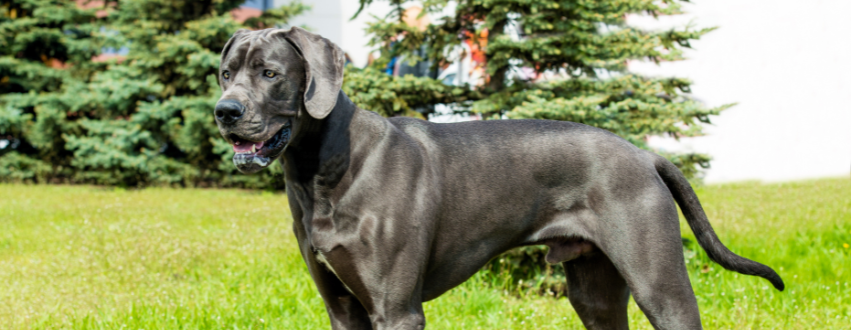
Great Dane Personality and Traits
One of the most striking characteristics of the Great Dane is its gentle and affectionate nature. Despite their imposing size, Great Danes are known for their friendly disposition and love for human companionship. They are often referred to as "gentle giants" due to their calm and patient demeanour, making them excellent family pets.
Great Danes are also incredibly loyal and protective, making them wonderful watchdogs. While they may appear imposing to strangers, Great Danes are typically friendly and welcoming to those they know. However, proper socialisation from an early age is crucial to ensure they are well-adjusted and confident around people and other animals.
Great Dane Health Issues
Like all breeds, Great Danes are susceptible to certain health issues. Due to their large size, they are prone to conditions such as hip dysplasia, bloat, and heart problems. It's essential for Great Dane owners to be aware of these potential health concerns and to work closely with their veterinarian to ensure their dog's well-being.
Regular vet check-ups, a nutritious diet, and moderate exercise can help mitigate the risk of certain health issues. Additionally, it's important to provide proper joint support, especially as Great Danes age, to maintain their mobility and overall quality of life.
Raising a Great Dane
Raising a Great Dane requires careful consideration and dedication. From puppyhood to adulthood, providing a loving and nurturing environment is key to raising a well-adjusted and happy Great Dane.
Great Dane Training

Training is an essential aspect of Great Dane ownership. Despite their gentle nature, Great Danes are powerful dogs that require consistent and firm leadership. Early obedience training and socialisation are crucial to ensure they develop good manners and behaviour.
From basic commands to more advanced obedience training, consistency and positive reinforcement techniques work best with Great Danes. Patience and understanding are key, as these intelligent dogs respond well to praise and rewards.
Great Dane House Training
House training a Great Dane can be challenging due to their size, but with patience and consistency, it can be accomplished. Establishing a routine, providing frequent opportunities for outdoor bathroom breaks, and rewarding good behaviour are essential for successful house training.
Investing in a sturdy and spacious crate can also aid in house training, as it provides a safe and comfortable space for your Great Dane when unsupervised. Remember to be patient and consistent, and your Great Dane will eventually learn appropriate bathroom habits.
How Much Exercise Does a Great Dane Need?
Despite their large size, Great Danes have relatively low exercise requirements compared to smaller, more active breeds. However, they still benefit from daily walks and moderate exercise to maintain their overall health and well-being.
Aim for at least two moderate walks per day, along with plenty of opportunities for play and mental stimulation. Avoid strenuous exercise, especially during hot weather, as Great Danes are prone to overheating due to their size and coat colour.
Best Walking Accessories for a Great Dane
When it comes to walking accessories for your Great Dane, opt for sturdy and comfortable gear that can withstand their size and strength. We recommend investing quality materials such as leather for your Great Dane, leather is durable and sturdy so makes a great option. Our Italian padded leather walking collection is perfect for your Great Dane, the padding on the collar makes it comfortable on their neck and the leather is real Italian leather so you can be sure it’s of the best quality. The collection comes in four stylish colour ways, shop now.
Great Dane Dietary Needs
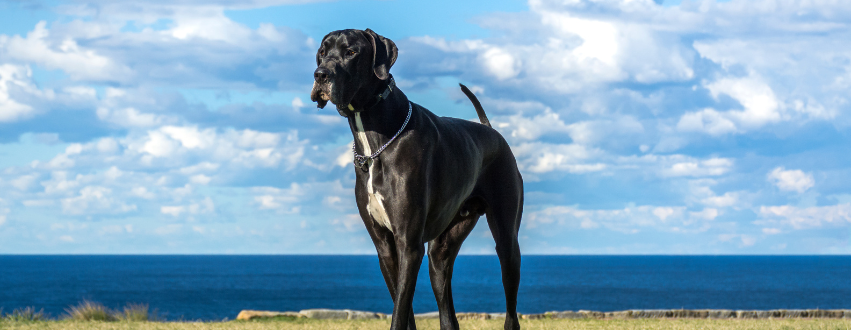
Proper nutrition is essential for maintaining your Great Dane's health and vitality. As a large and fast-growing breed, Great Danes have unique dietary requirements that should be carefully considered.
Best Food for a Great Dane Puppy
During the puppy stage, it's crucial to feed your Great Dane a high-quality puppy food specifically formulated for large breeds. These diets are balanced to support healthy growth and development while minimising the risk of skeletal issues associated with rapid growth.
Look for puppy foods that contain optimal levels of protein, fat, calcium, and phosphorus to support bone and muscle development. Avoid overfeeding and excessive supplementation, as this can contribute to skeletal problems and obesity in Great Dane puppies.
We recommend a combination of both wet and dry food to feed your Great Dane puppy. For dry food we love the Acana large breed puppy food, it has 70% quality animal ingredients so it’s super protein rich which will help support your Great Dane puppies rapid growth. It also has no artificial preservatives, flavours or colours so you can be sure you are feeding your puppy the best. For wet food we recommend the Carnilove Salmon with Blueberries puppy food, it is both grain free and potato free so is highly digestible. The salmon supports the skin, heart, brain and joints to promote healthy physical development for your pup, whilst the blueberries promote urinary health and also support brain development and function. This wet food contains 85% wild-origin meat so is protein rich which is perfect for supporting your puppies growth.
Best Food for a Great Dane
As your Great Dane matures, transitioning to an adult formula is recommended to meet their changing nutritional needs. Choose a premium dog food that is formulated for large breeds and contains high-quality ingredients, such as real meat, whole grains, and essential vitamins and minerals.
Avoid foods with fillers, by-products, and artificial additives, as these provide little nutritional value and can contribute to digestive upset and other health issues. Consult with your veterinarian to determine the best diet plan for your Great Dane based on their age, weight, and activity level.
As a starting point we recommend looking at Acana, Orijen and Carnilove foods, all three brands have protein rich foods with no additives and high nutritional values.
Best Dog Food for Senior Great Dane
As Great Danes age, their nutritional needs may change, requiring adjustments to their diet to support their overall health and well-being. Senior-specific formulas are available that are tailored to the needs of older dogs, including joint support, weight management, and digestive health.
Look for senior dog foods that contain glucosamine, chondroitin, and omega-3 fatty acids to support joint health and mobility. Reduced calorie and fat content can help prevent obesity and maintain a healthy weight in senior Great Danes.
Great Dane Bed: Orthopaedic Comfort
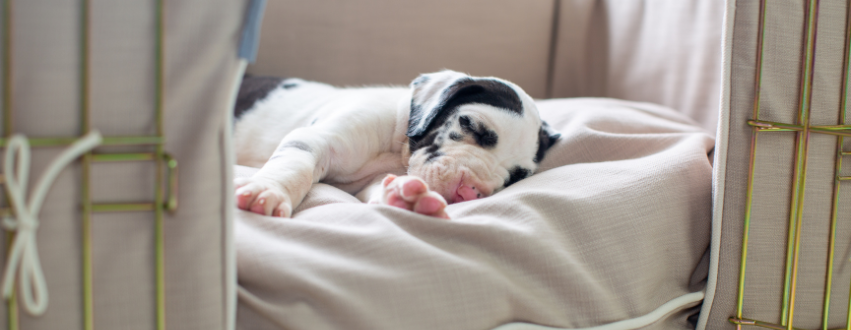
Providing a comfortable and supportive bed is essential for your Great Dane's overall comfort and well-being. Great Danes, like many large breeds, can be prone to joint issues such as hip dysplasia and arthritis. Therefore, investing in an orthopaedic bed can provide much-needed support for their joints, especially as they age.
Look for orthopaedic dog beds that feature memory foam or supportive foam padding to cushion your Great Dane's body and relieve pressure points. Opt for a bed with a removable and machine-washable cover for easy cleaning, as Great Danes can be prone to shedding and drooling. Our orthopaedic mattresses are constructed with a thick orthopaedic foam and have a removable machine washable plush cover so are the perfect choice for your Great Dane.
Ensure the bed is large enough to accommodate your Great Dane's size comfortably. A bed that allows them to stretch out fully and rest their head comfortably is ideal for promoting relaxation and quality sleep.
Best Toys for Great Danes
When it comes to toys, Great Danes have unique needs due to their size and strength. Choosing durable and size-appropriate toys is essential to prevent accidents and ensure safe playtime for your Great Dane. Look for toys made from high-quality materials that can withstand rough play and heavy chewing. Rubber toys, such as KONG, are excellent choices for Great Danes as they are durable and can help satisfy their natural chewing instincts.
Interactive toys, such as puzzle feeders or treat-dispensing toys, can provide mental stimulation and prevent boredom in Great Danes, we love the Nina Ottosson range. Additionally, soft plush toys can offer comfort and companionship during quiet moments of relaxation, for more durable plush toys look at the Gigwi duraspikes range they are designed for dogs who love to chew.
In conclusion, Great Danes are truly remarkable dogs with a gentle and loving nature. By understanding their unique needs and providing proper care, training, and nutrition, you can ensure a happy and fulfilling life for your Great Dane companion. Whether you're enjoying leisurely walks together or cozying up for cuddle time, the bond you share with your Great Dane is truly special. Shop everything your Great Dane needs in our Great Dane shop here.






















































